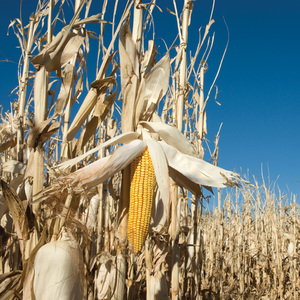WASDE revises corn forecast down, maintains corn use for ethanol

October 11, 2018
BY Erin Krueger
On Oct. 11, the USDA released the October edition of its World Agricultural Supply and Demand Estimates report, reducing its 2018-’19 production forecast for corn, but maintaining its forecast for the volume of corn going to ethanol production.
According to the WASDE report, 2018-’19 corn production is now forecast at 14.778 billion bushels, down 48 million bushels from last month on a reduced yield forecast. Harvested area is virtually unchanged from September.
Corn supplies are forecast record high, as a smaller crop is more than offset by an increase in beginning stocks. Exports are raised 75 million bushels, reflecting U.S. price competitiveness and reduced exports for Russia.
Advertisement
Projected feed and residual use is lowered 25 million bushels based on a lower crop and indicated disappearance during 2017-’18. Projected corn use for ethanol is maintained at 5.65 million bushels.
Corn ending stocks for 2018-’19 are raised 39 million bushels. The projected midpoint for the season-average corn price received by producers is unchanged at a range of $3.00 to $4.00 per bushel.
Foreign corn production is forecast modestly higher reflecting projected increases for Egypt, Mali, Kenya, Canada, the EU and Serbia that are partly offset by reductions for Russia and Malawi. The projected corn yield for Russia is lowered based on reported harvest results to date.
Advertisement
Corn exports are reduced for Russia, more than offsetting increases for the U.S., Serbia and Canada. Corn imports are raised for Mexico and Israel. Foreign corn ending stocks are higher, mostly reflecting increases for Mexico, Egypt, and Iran that are partly offset by reductions for South Africa and Turkey. Global corn stocks, at 159.4 million tons, are up 2.3 million tons from last month.
Related Stories
U.S. fuel ethanol capacity fell slightly in April, while biodiesel and renewable diesel capacity held steady, according to data released by the U.S. EIA on June 30. Feedstock consumption was down when compared to the previous month.
The U.S. EPA on July 8 hosted virtual public hearing to gather input on the agency’s recently released proposed rule to set 2026 and 2027 RFS RVOs. Members of the biofuel industry were among those to offer testimony during the event.
The USDA’s Risk Management Agency is implementing multiple changes to the Camelina pilot insurance program for the 2026 and succeeding crop years. The changes will expand coverage options and provide greater flexibility for producers.
The USDA’s National Agricultural Statistics Service on June 30 released its annual Acreage report, estimating that 83.4 million acres of soybeans have been planted in the U.S. this year, down 4% when compared to 2024.
SAF Magazine and the Commercial Aviation Alternative Fuels Initiative announced the preliminary agenda for the North American SAF Conference and Expo, being held Sept. 22-24 at the Minneapolis Convention Center in Minneapolis, Minnesota.
Upcoming Events










